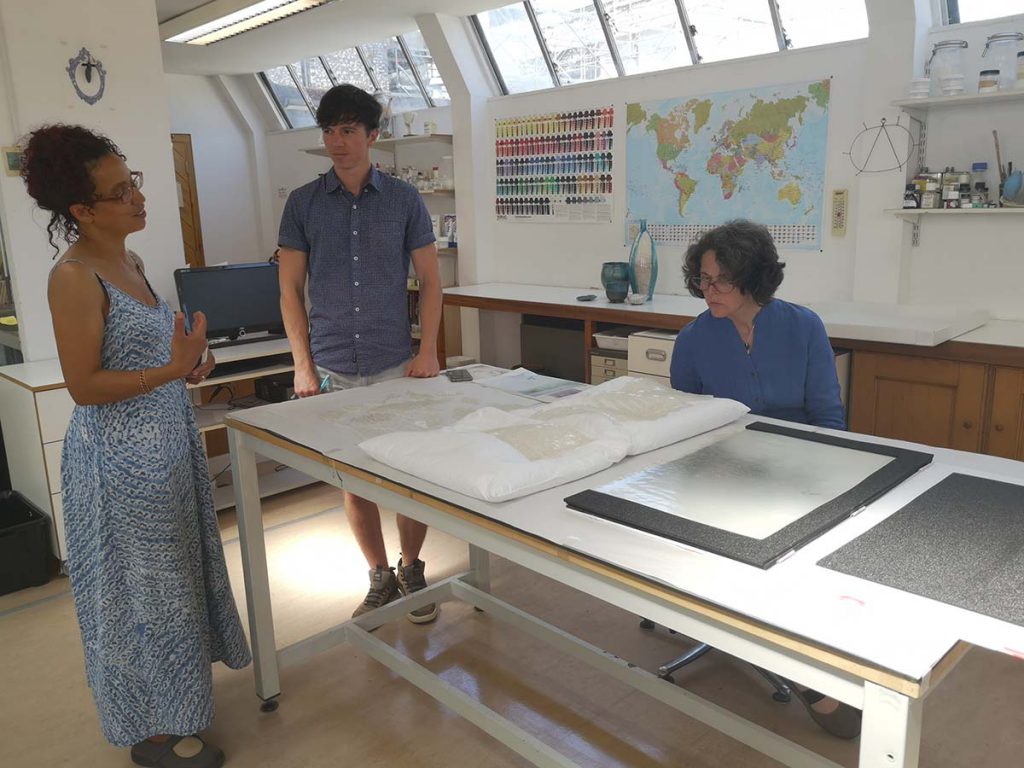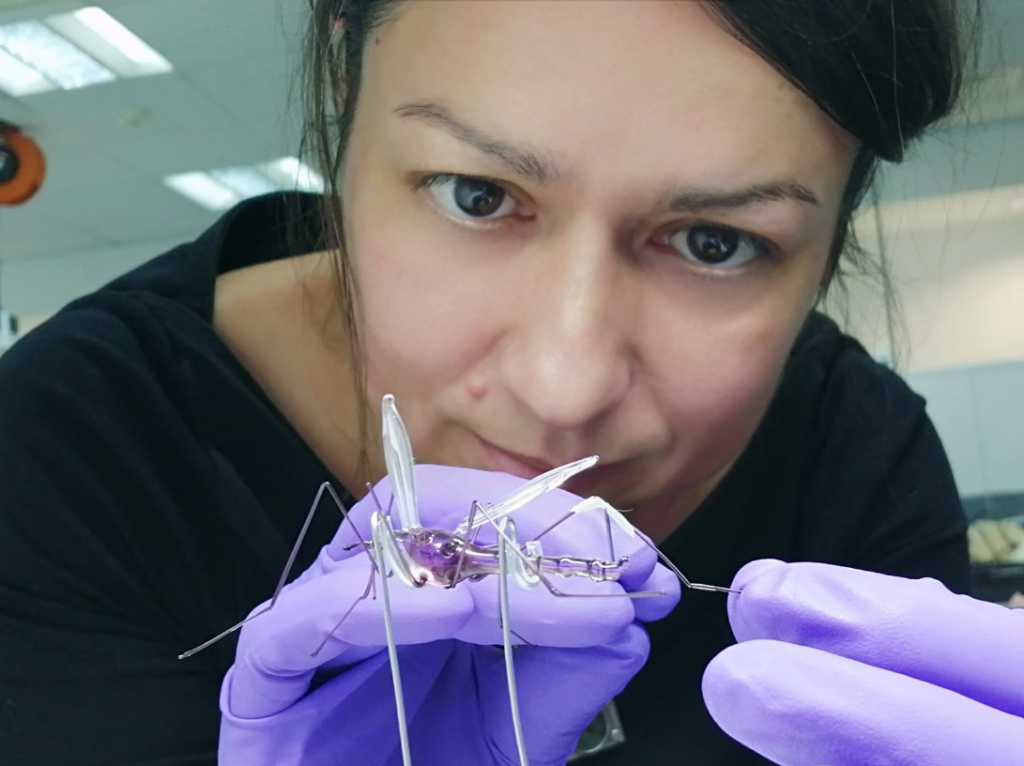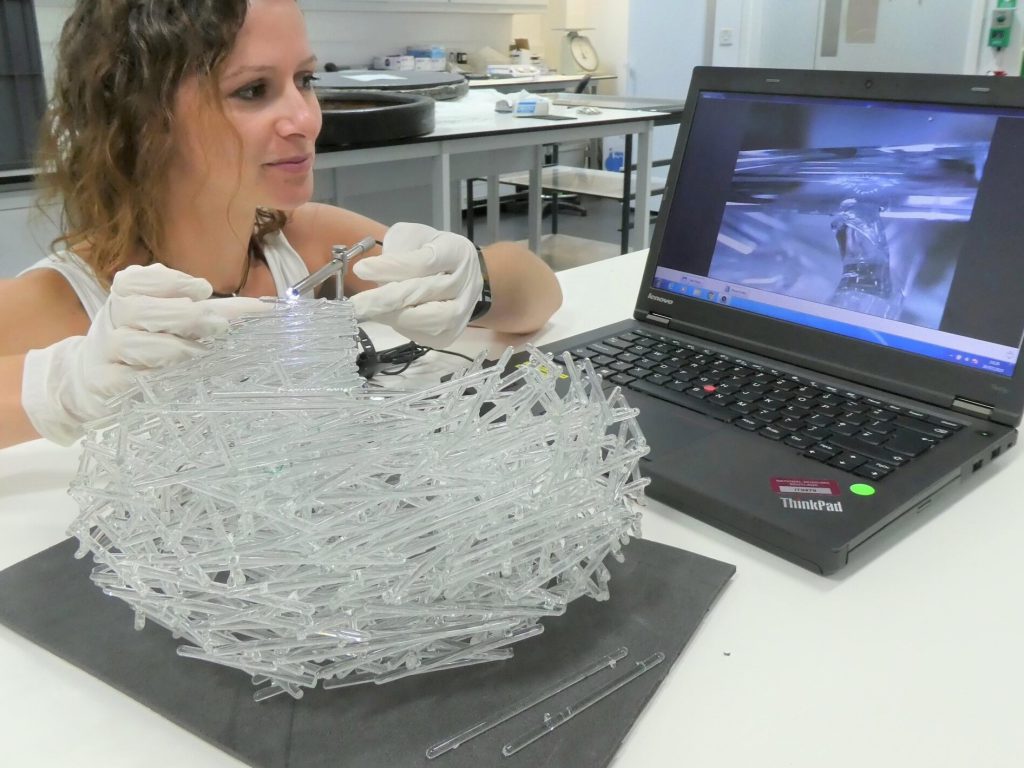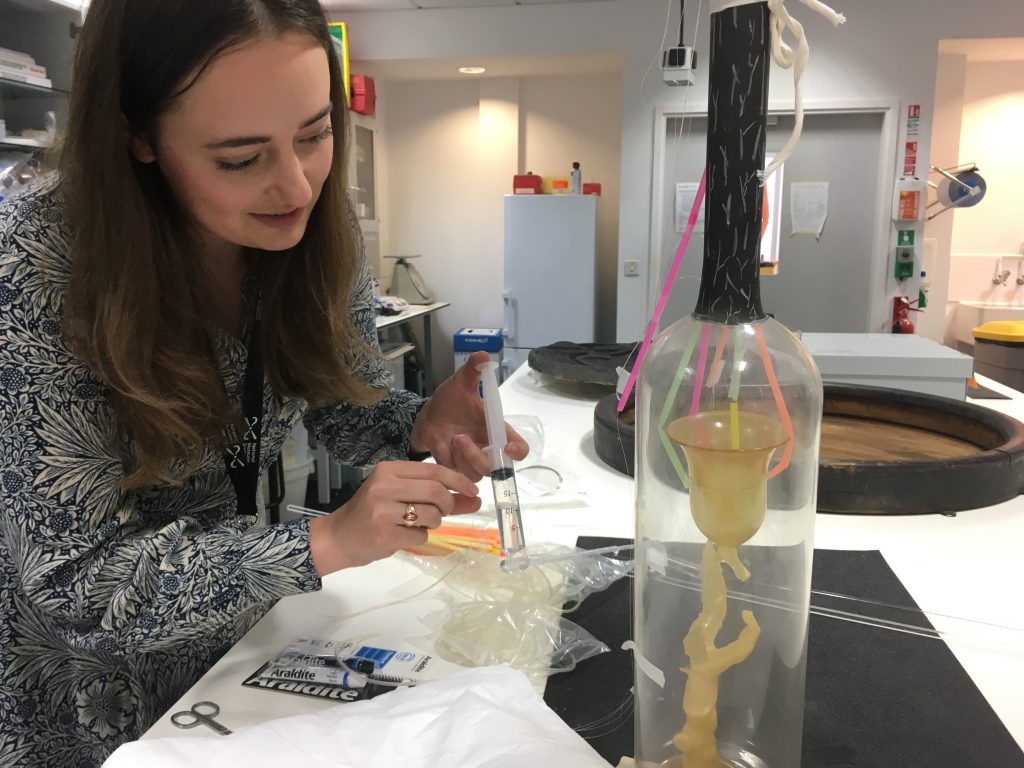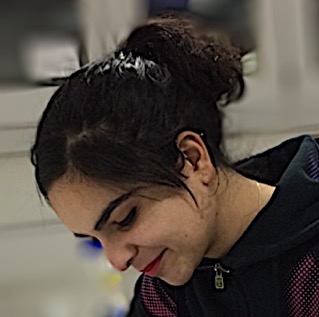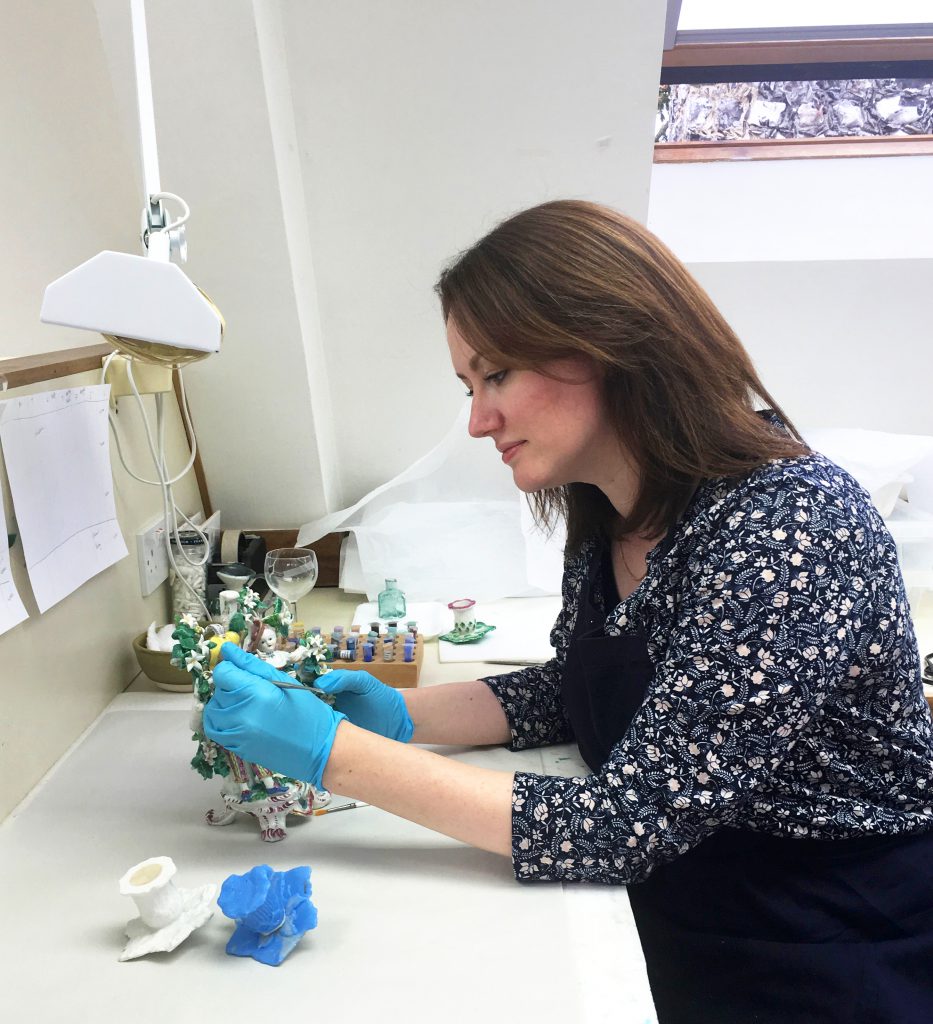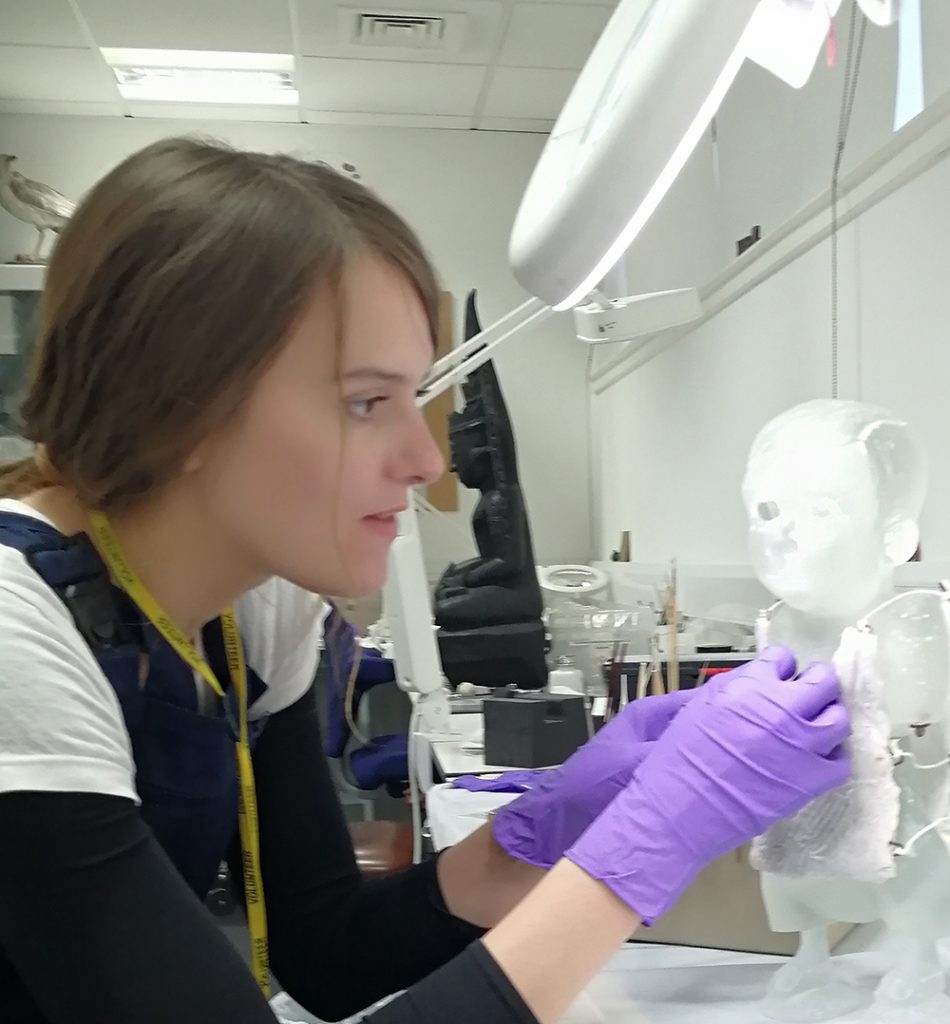Over the last 18 months National Museums Scotland has been conducting the Dan Klein Conservation Project, a wonderful collaborative project which brought conservators and practitioners within the world of contemporary studio and art glass together to share their knowledge to help preserve many works of craft and art for the next generation.
As Curator of Modern & Contemporary Design I’m part of a team that has the responsibility for the care of an amazing collection of studio and art glass. You may have read in my tribute to Dan last year, discussing how, alongside his partner Alan, they had amassed a collection, both together and separately, which represented some of the most significant names to have been based with Britain and Ireland in the studio and art glass world, of which they generously donated over 300 pieces to National Museums Scotland.
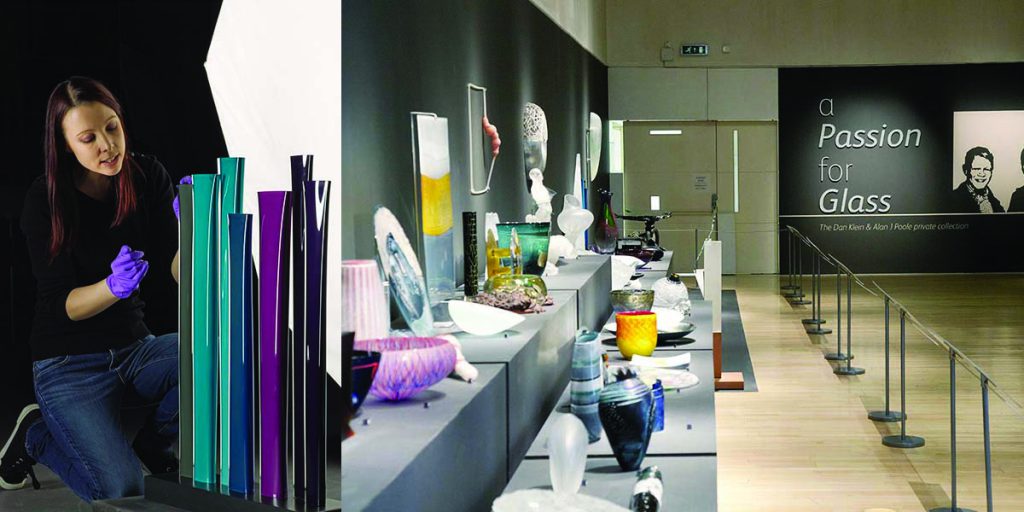
As with the life of any collection, things may get lost or damaged along the way. And with Dan and Alan being so generous to loan works to museums and galleries for exhibition; as well as living with these works of art; sometimes this did happen. In addition, as – heartbreakingly – Dan suddenly passed away during the preparation for the transfer of the collection in 2009 to National Museums Scotland, there were a number of pieces unfortunately which arrived at the Museum that needed some much-needed TLC, many of which had been in storage for a number of years, that neither Dan or Alan were aware that their condition had changed. As significant works of art, craft and design but also, significant to Dan and Alan, they were not discounted from the collection when they first arrived, but were left for a time when the Museum could conserve them.
So, following a busy period where the Museum undertook a series of redevelopments and creation of new galleries, which included the opening of the Art & Design gallery – Making & Creating (which features a small selection of Dan & Alan’s collection) – I called upon the expertise of my former colleague Stefka Bargazova to see what could be done in regard to conserving these works of glass art for the next generation. Stefka – who is a specialist in conserving works of glass and ceramics – enthusiastically undertook the challenge, agreeing that this could be a unique opportunity for collaboration between, not only ourselves as curators and conservators, but also for opening up dialogues with the artists around the conception and making of these works, that would benefit future research and knowledge on process and techniques, and as a learning opportunity for the conservation students that intern under the artefact conservation team here at NMS.
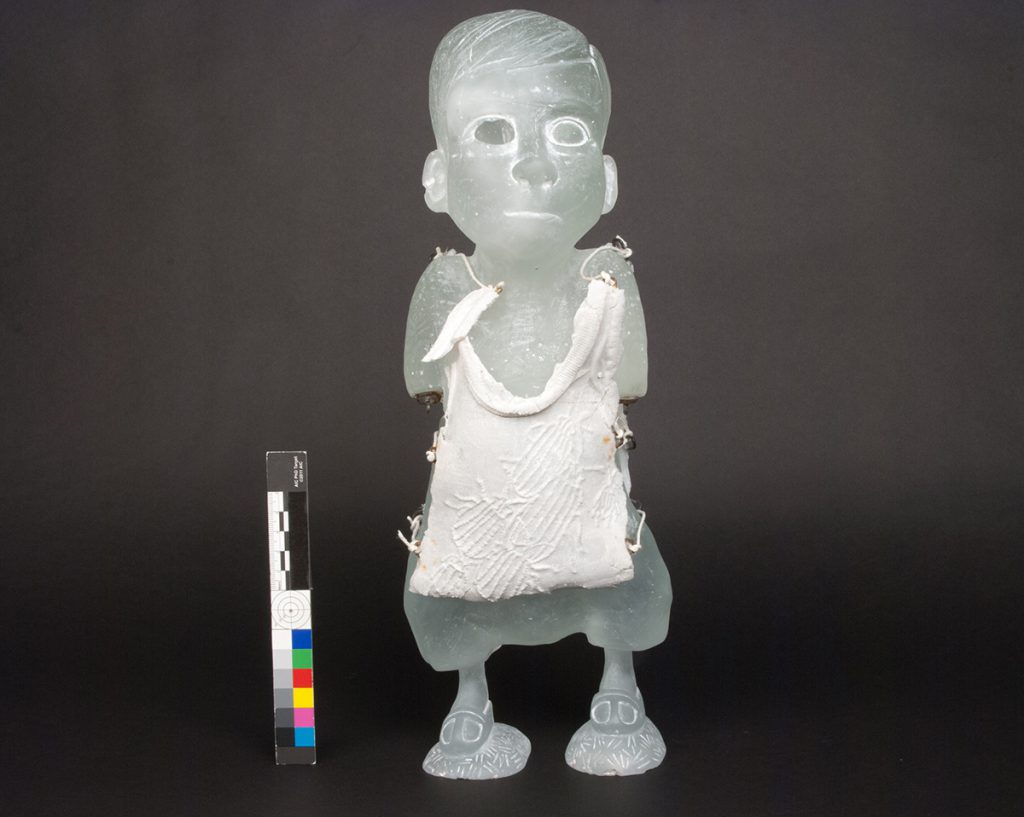
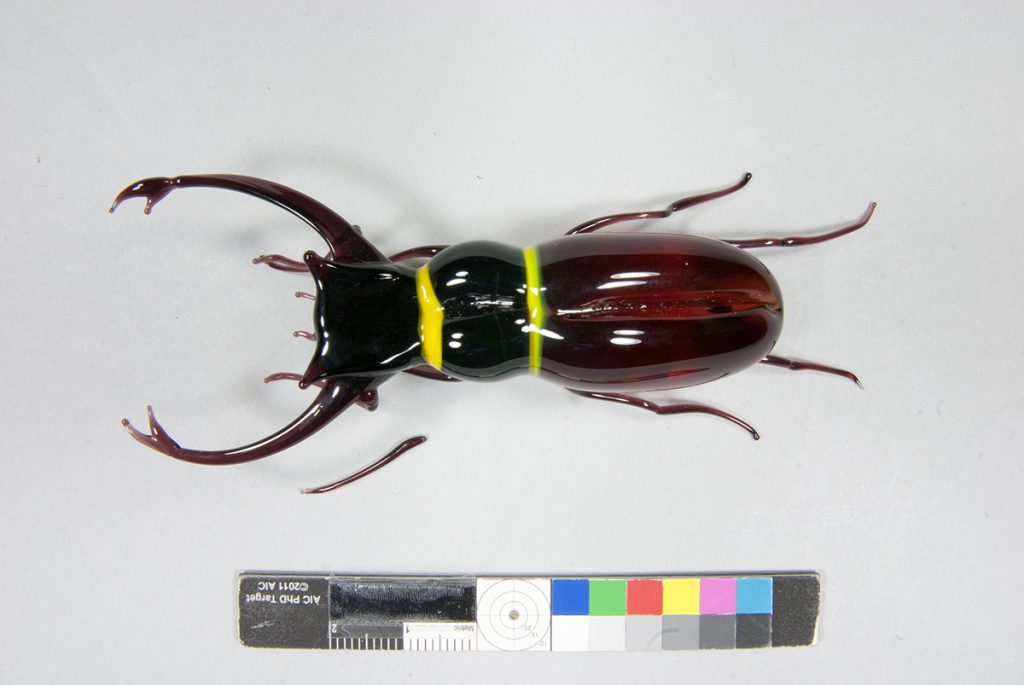
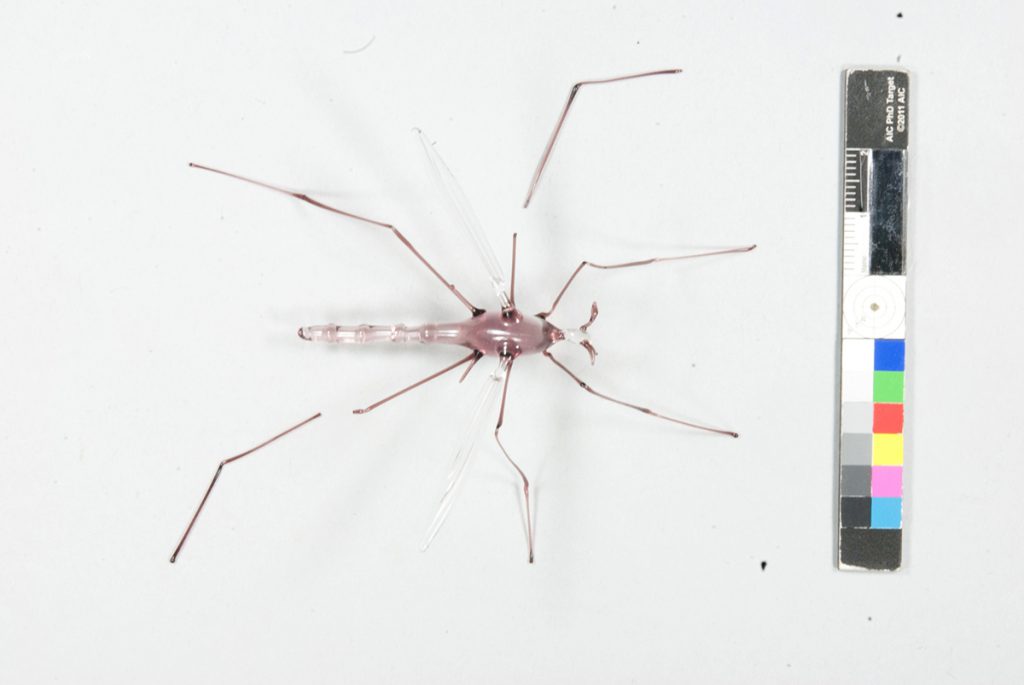
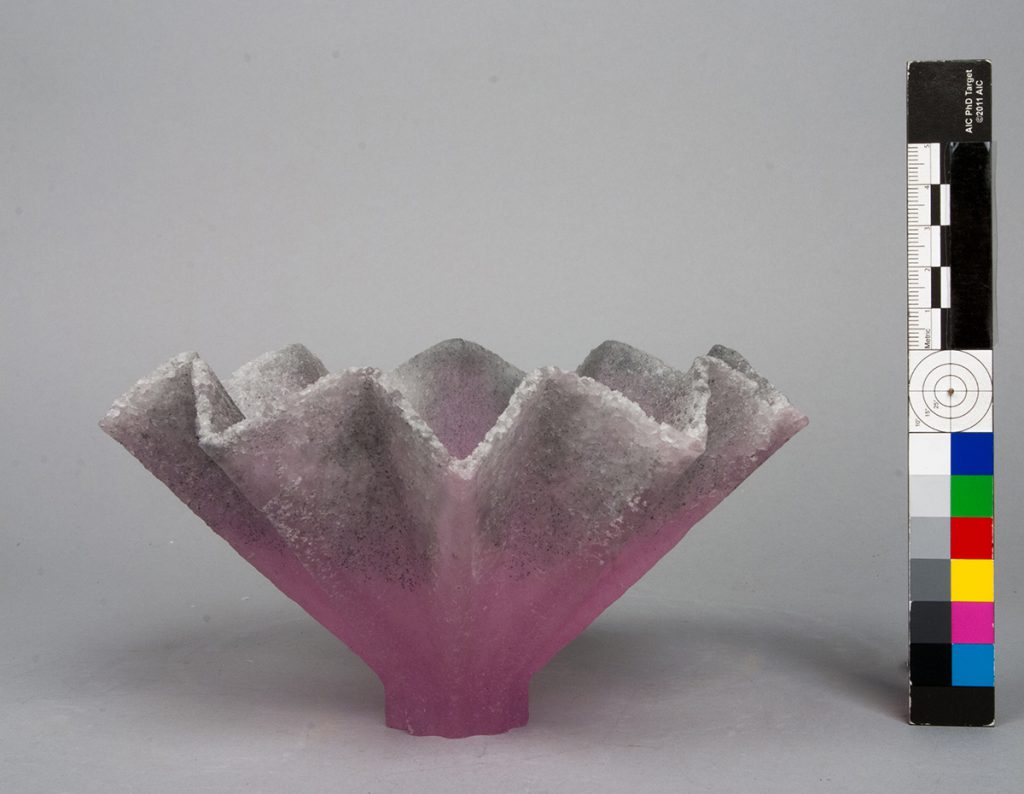
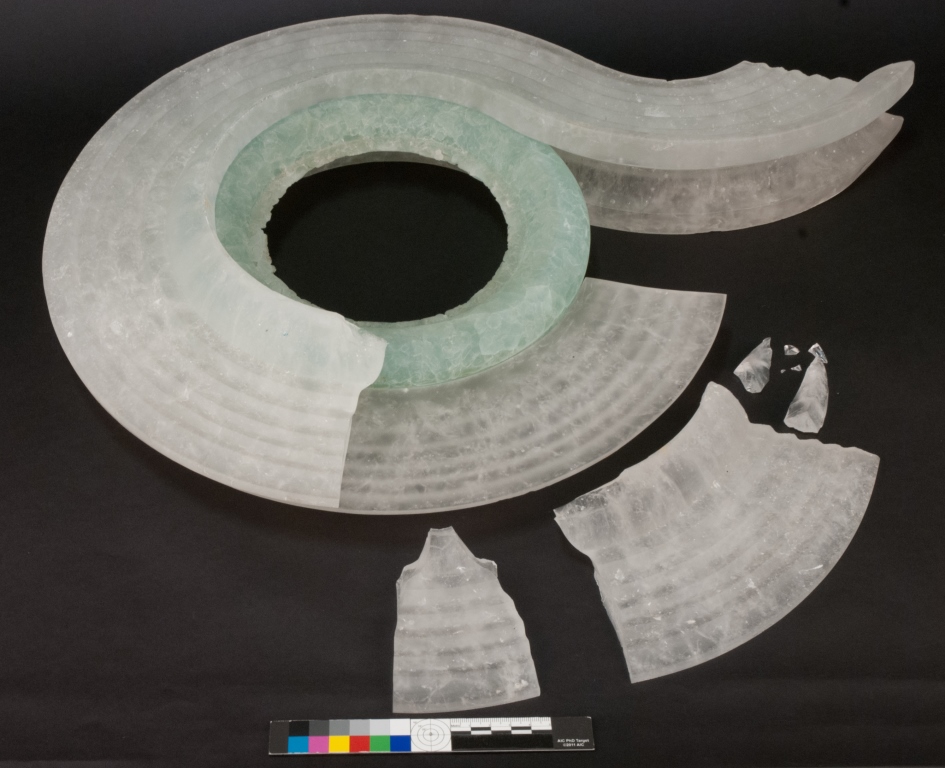
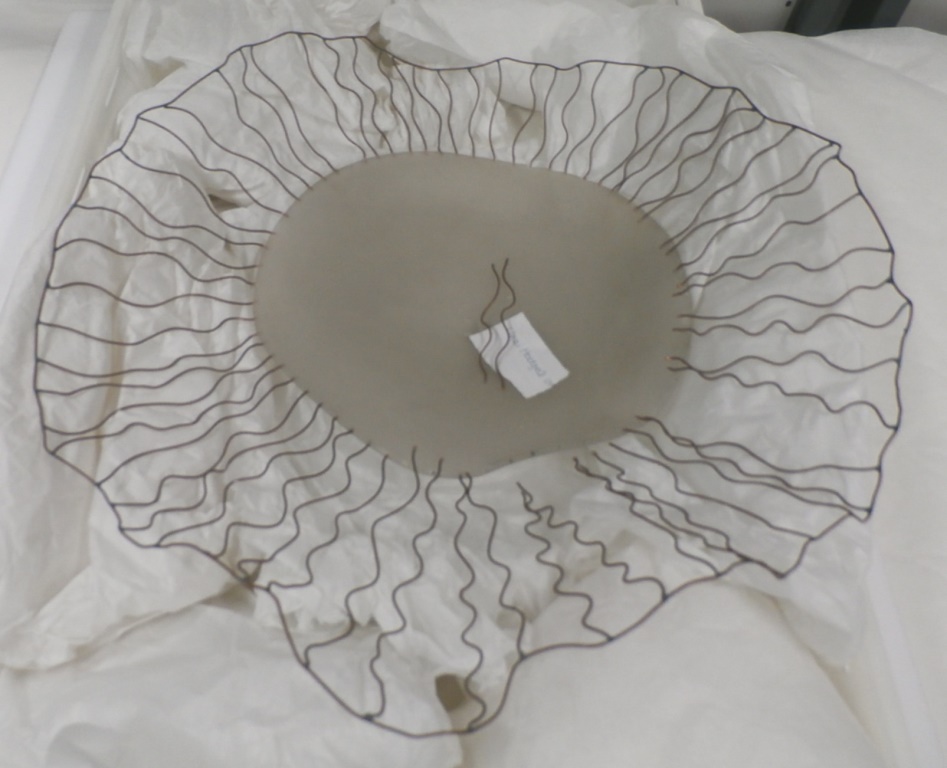
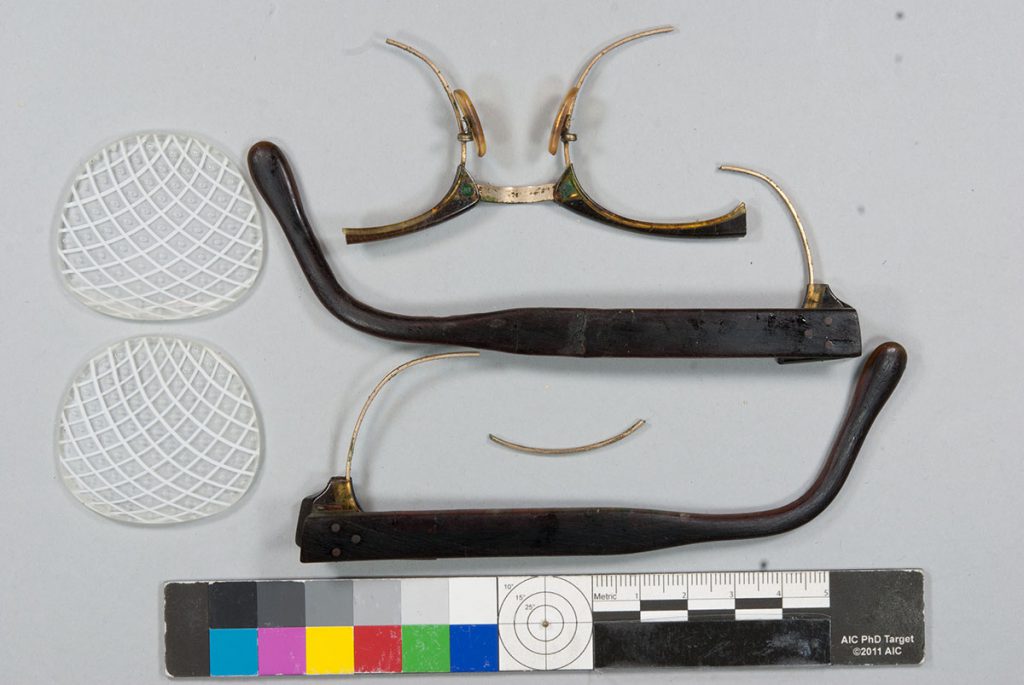

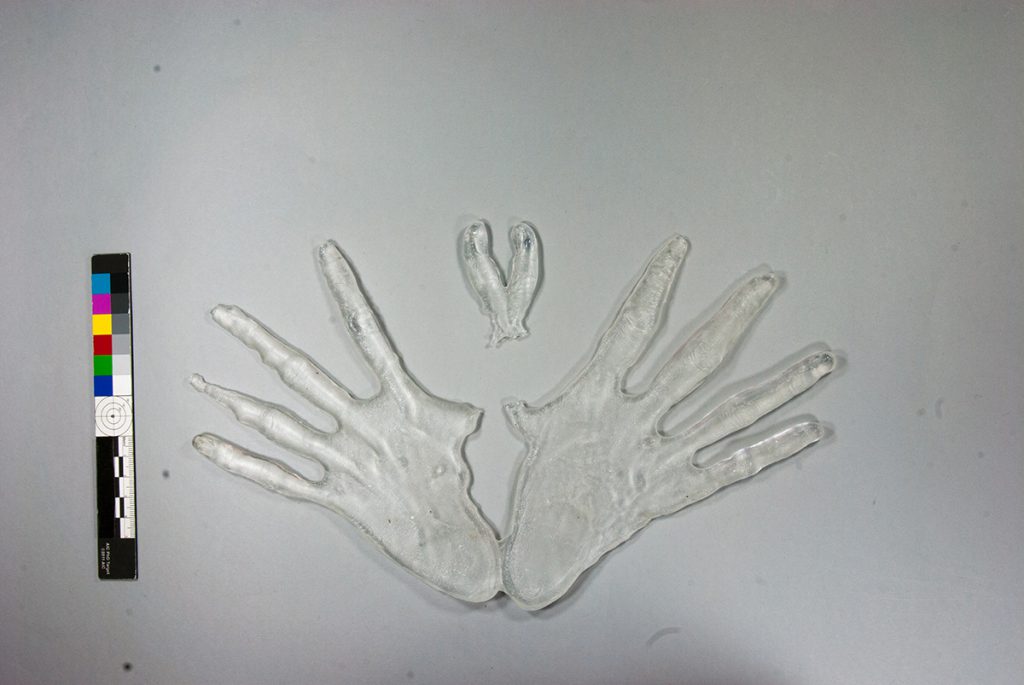
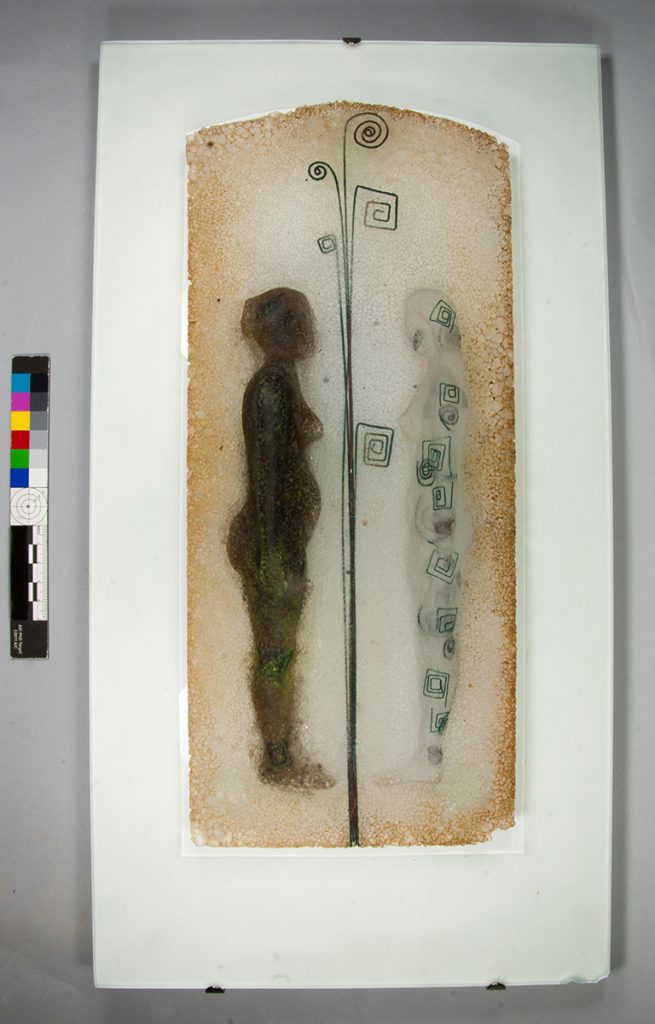
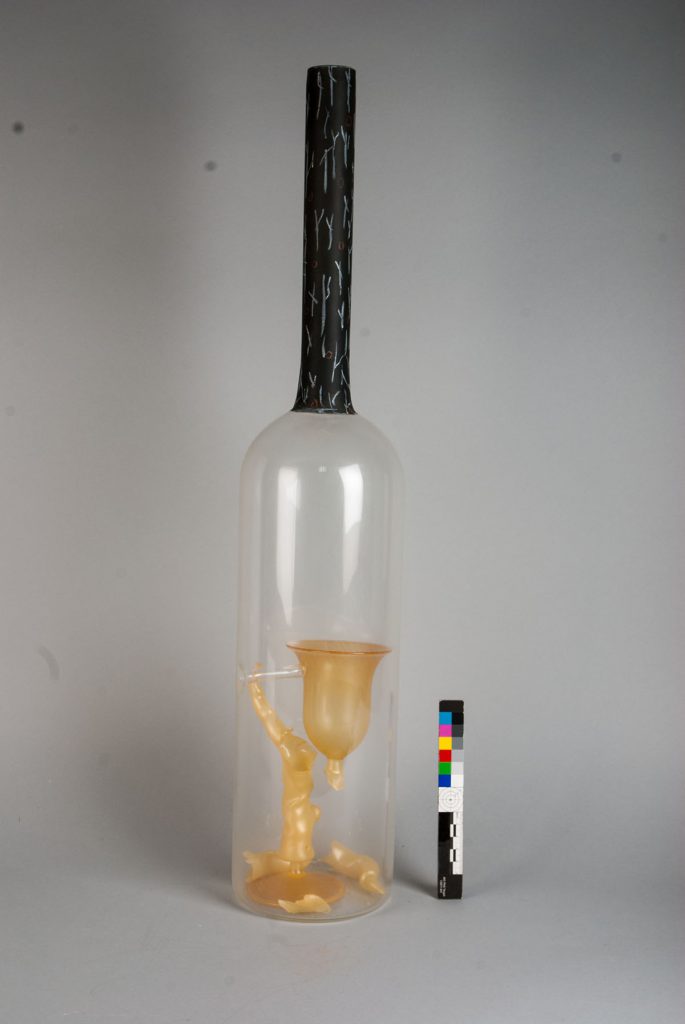
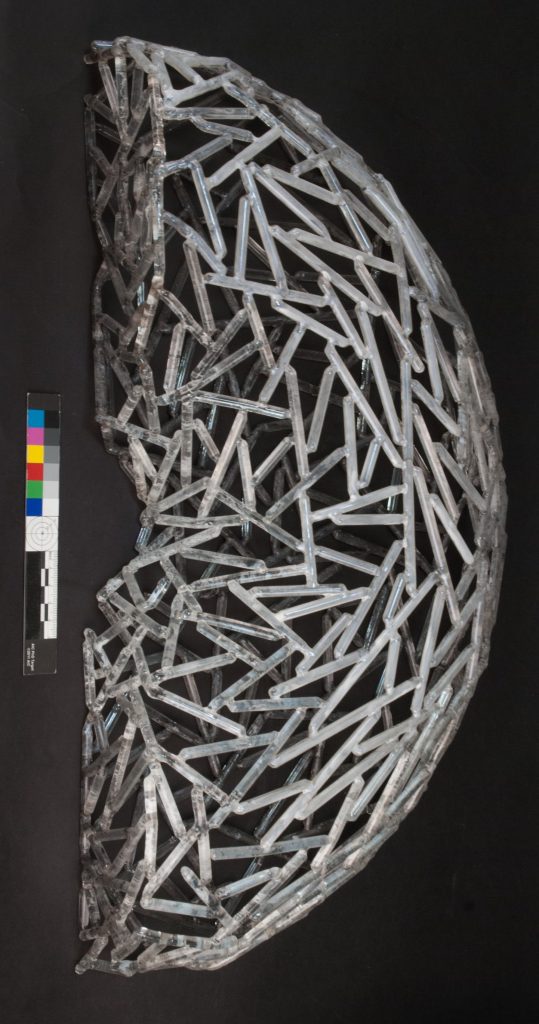
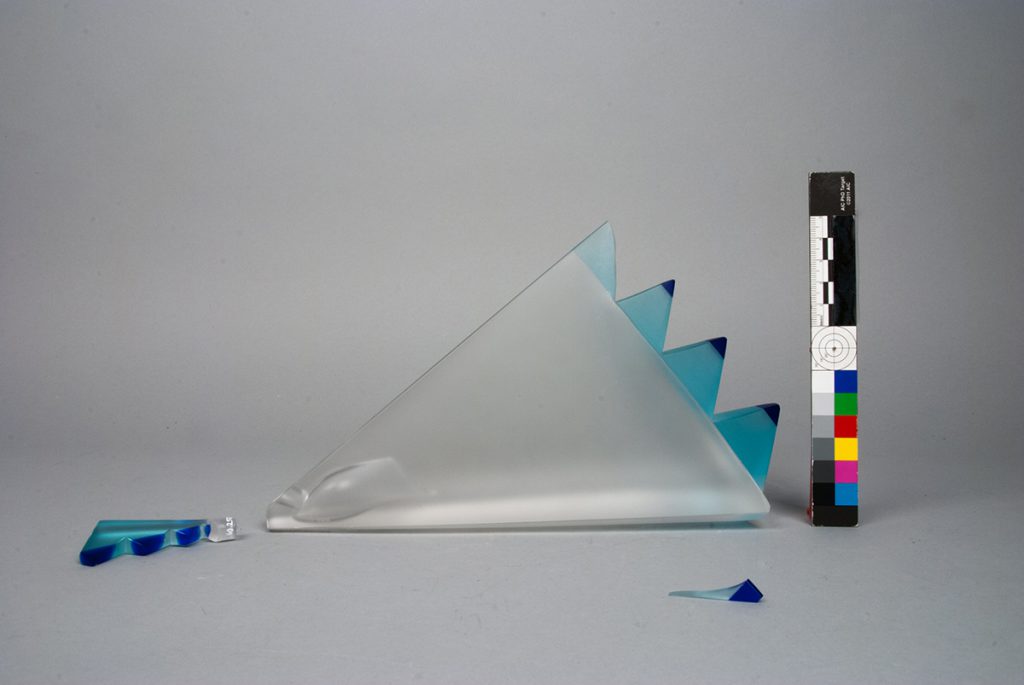
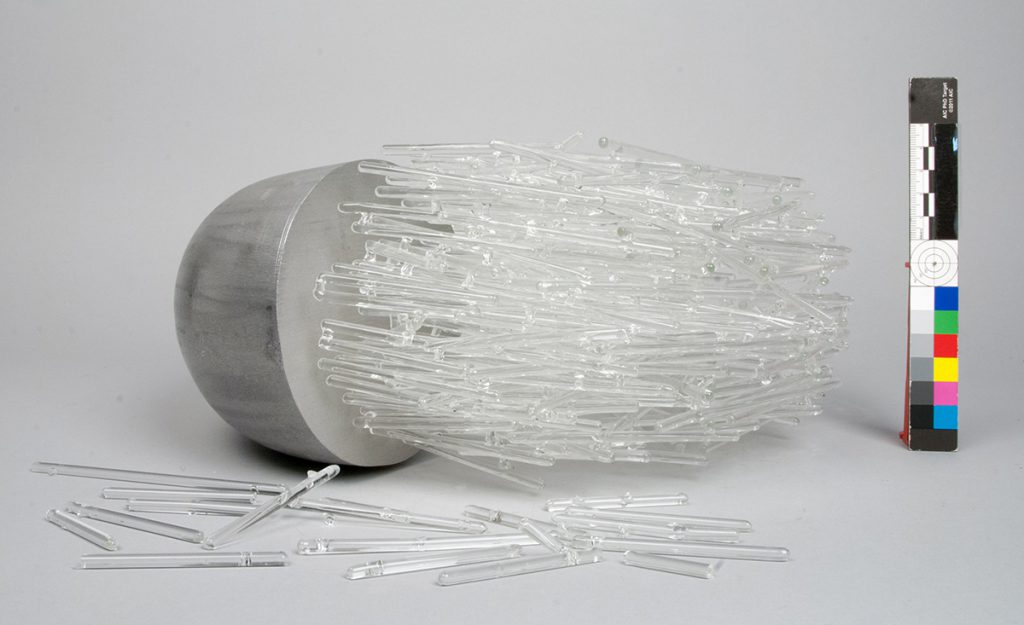

The 14 works from the Dan Klein and Alan J. Poole Private Collection of Modern Glass before conservation treatment started. Images © National Museums Scotland
Stefka – with the help of UCL student intern Amreet Kular – conducted a preliminary condition assessment of the entirety of the collection in 2017, identifying a group of 14 works which were physically damaged that would require conservation. Within this number there were a selection that would require extensive conservation interventions, to provide structural stability and reconstruction; whereas others would only need minor work to make stable. This was all with the aim to not only allow for the safe handling of these artworks within storage, but to also make them suitable for potential future display.
The works identified for conservation were created using varied, sometimes experimental, as well as traditional glass techniques. Thus posing various challenges for the team in their knowledge and understanding of how to conserve objects and works of art made in glass, as well as in their consideration of the narratives that some of these works were expressing. The works also varied in scale: from the minute – as with the Crane Fly Stefka conserved, to large sculptural works like Form by Galia Amsel – that Amreet carefully reconstructed. All of this would require a special level of creativity, flexibility and problem solving in the conservation approach by the team.
As a result of these often complex challenges, the team developed a series of new conservation skills, which will now aid other conservators in their approach to glass conservation. For instance, Richard Meitner’s Branch seemed a structurally challenging and “impossible” object to conserve – it’s suspended goblet on a branch had broken away and shattered within the confines of its glass bottle (K.2011.60.79) – Margot undertook the conservation work with gusto, amazing everyone with her skills and perseverance within its reconstruction so not to destroy the illusion of its original creation, and resulted in her presenting this project at last year’s Recent Advances in Glass and Ceramic Conservation, 5-7 September 2019, The British Museum.
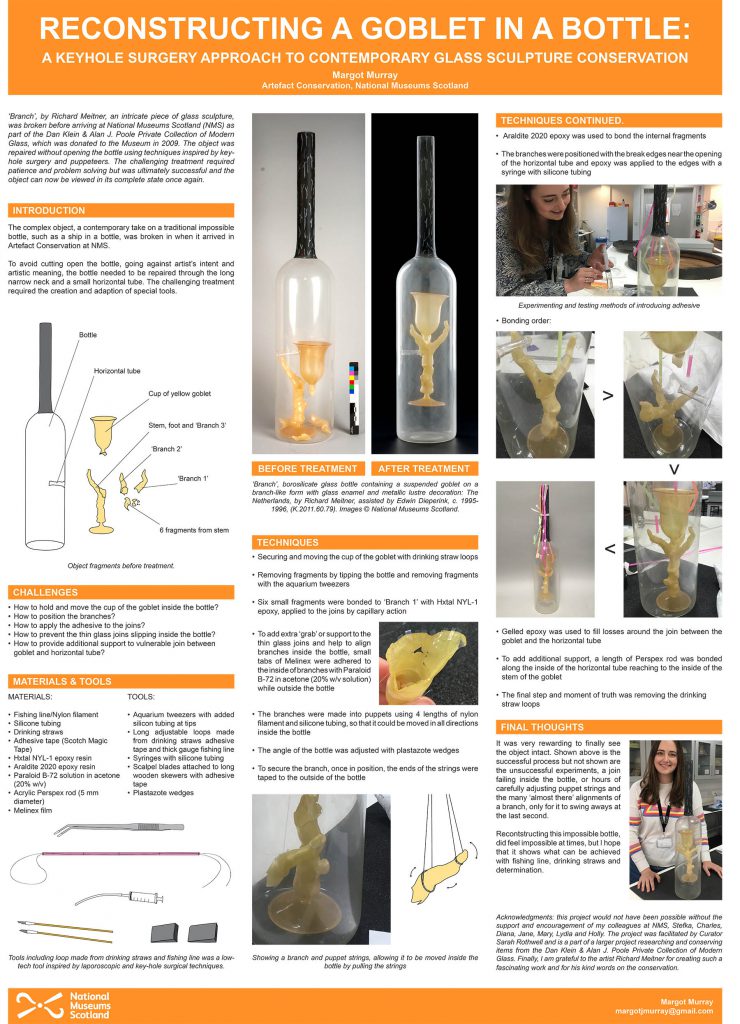
Conservation is assumed to be about restoring works of historic significance, but when working with material created by living artists, it is important that we open dialogues with these artists to make sure we are conserving the works in the way that those artists would want them to be. In addition through consultation we can ascertain if the object had altered or changed at all, so allowing us to identify any potential glass disease or intervention that may have taken place from its original concept.
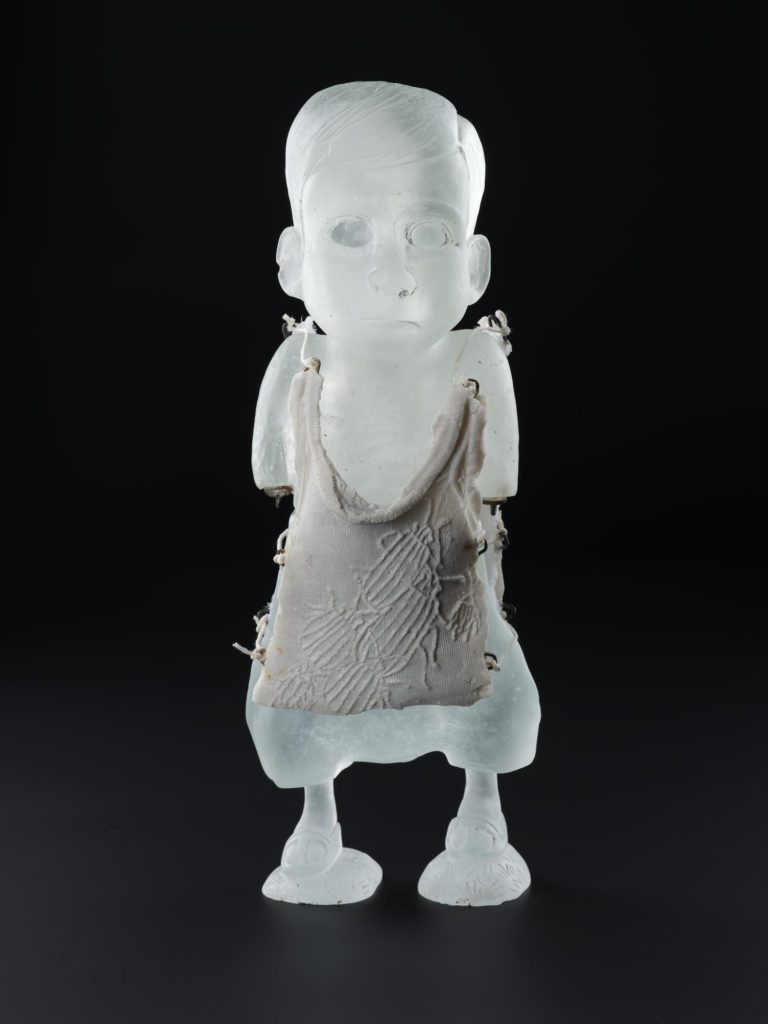
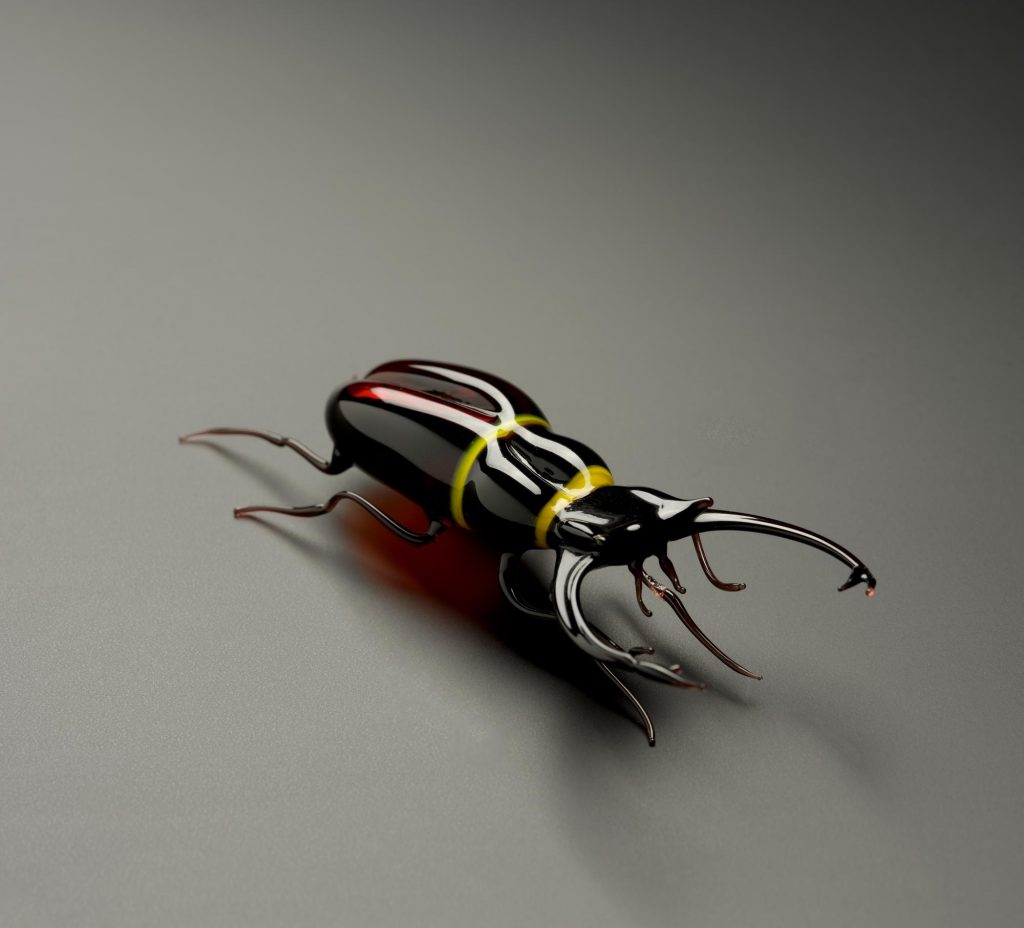
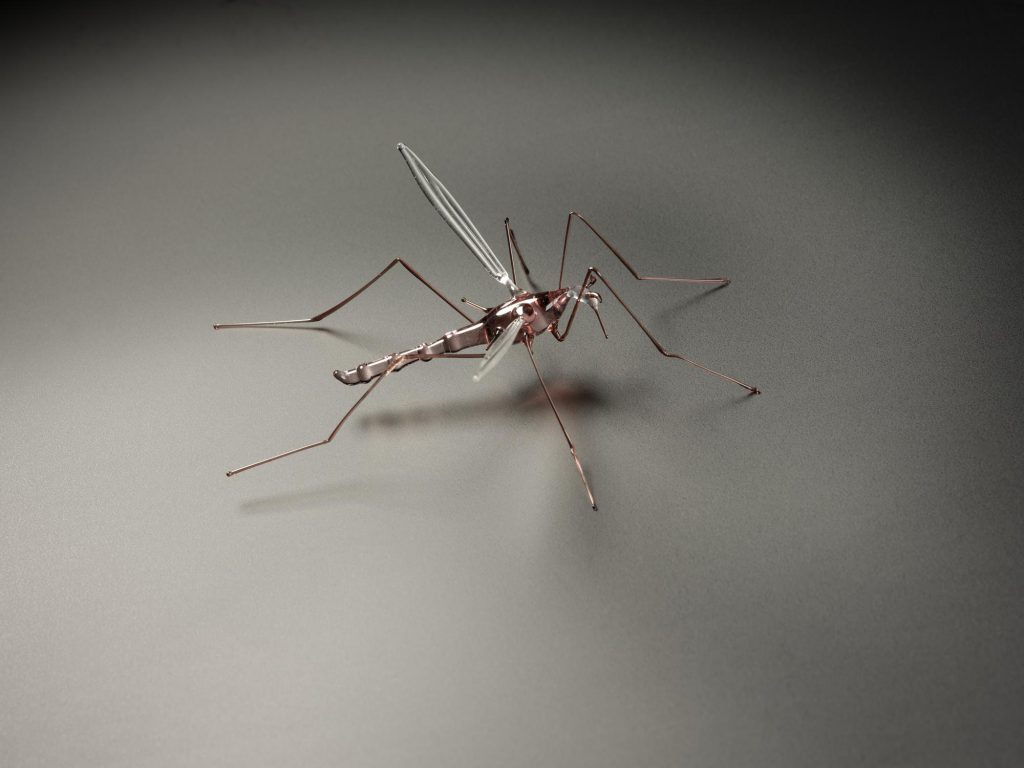
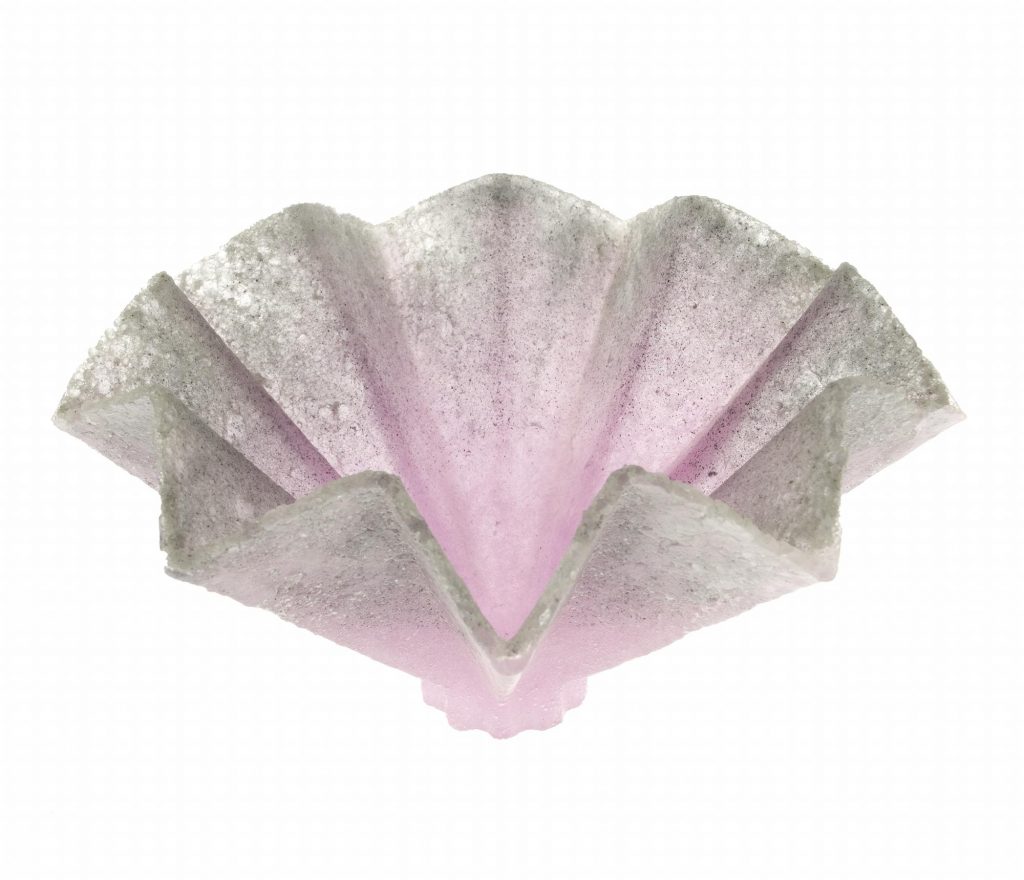
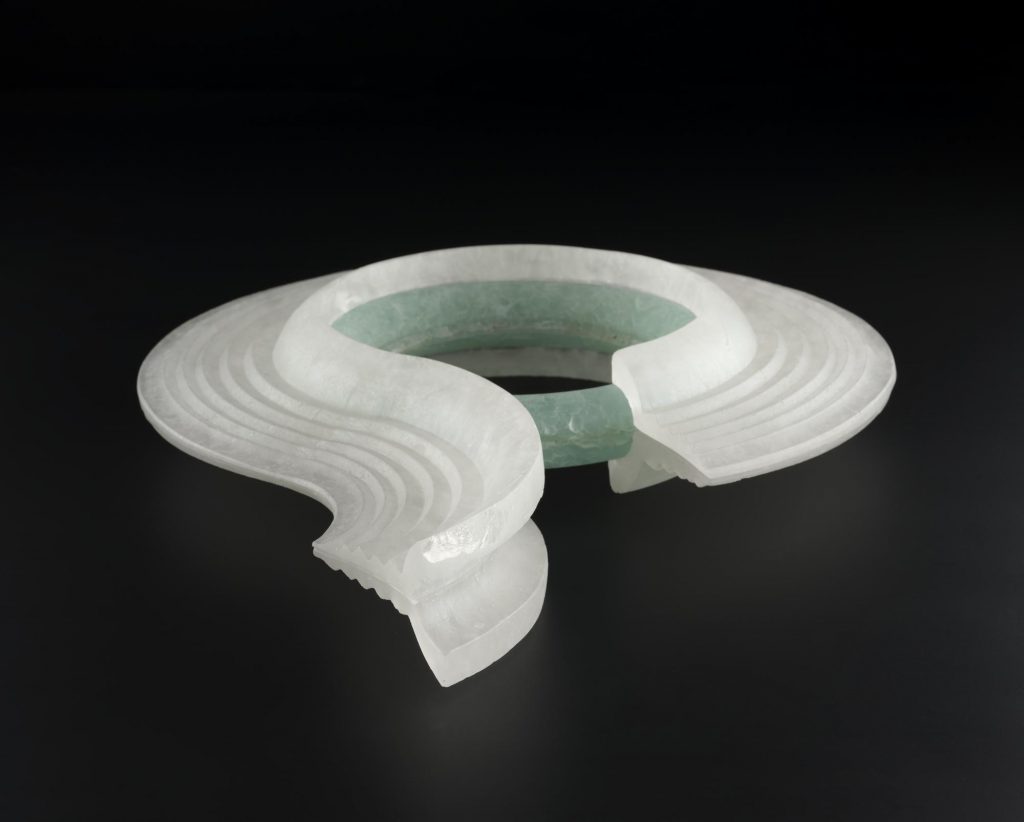
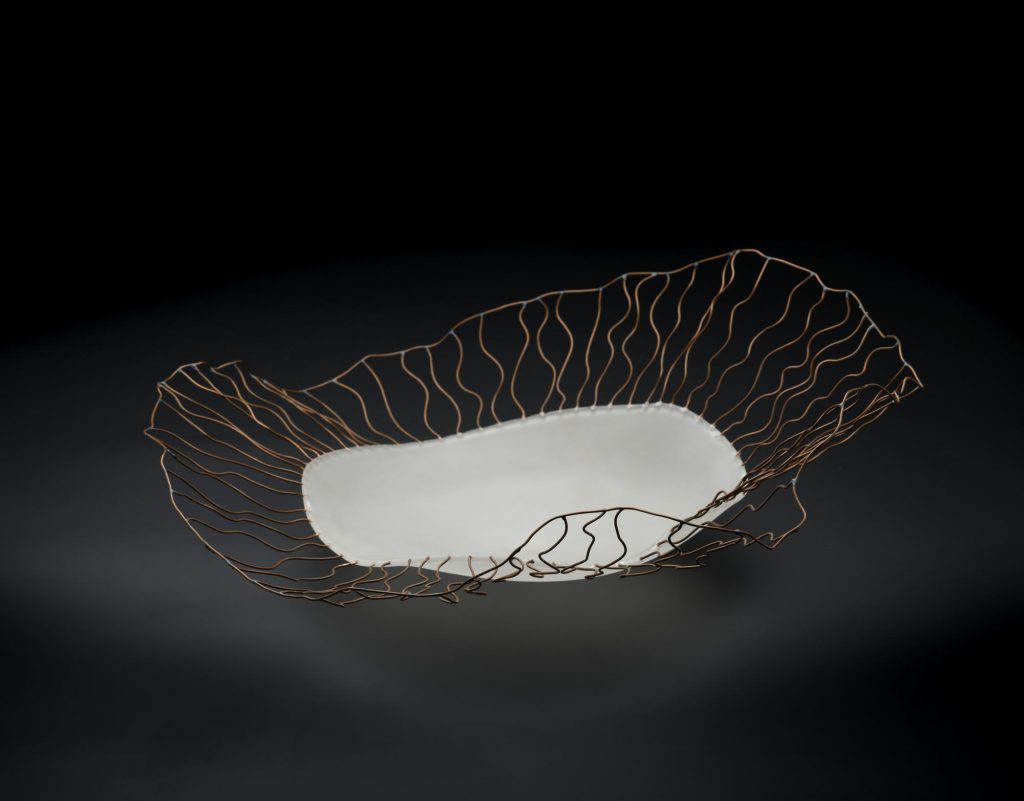
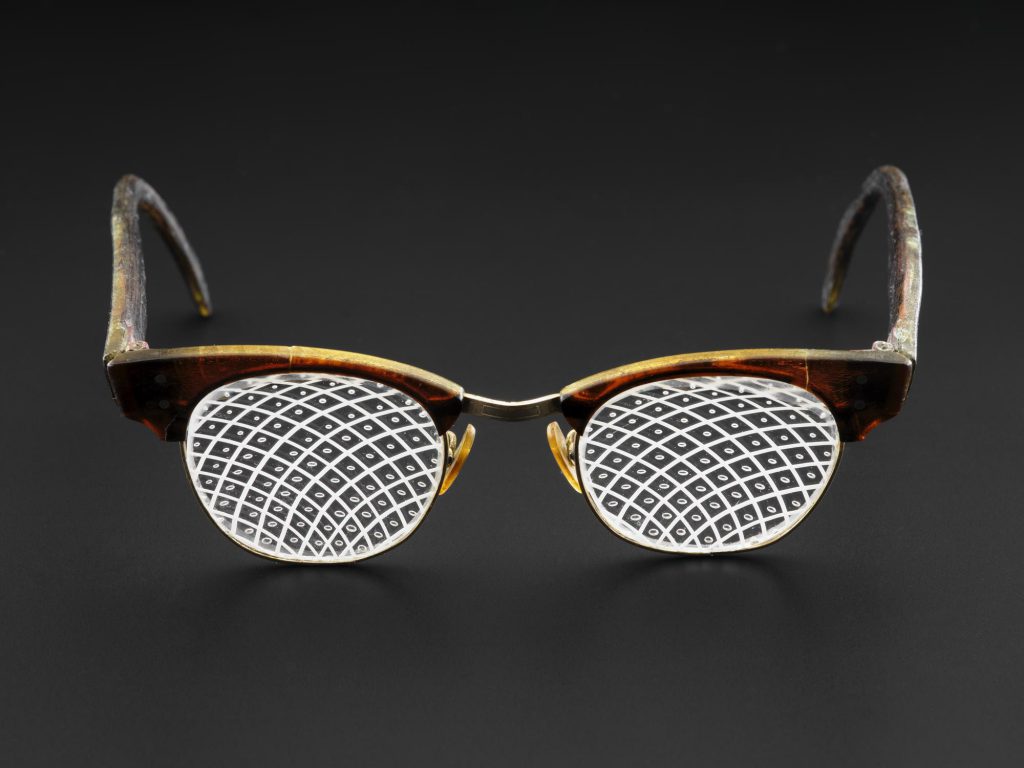
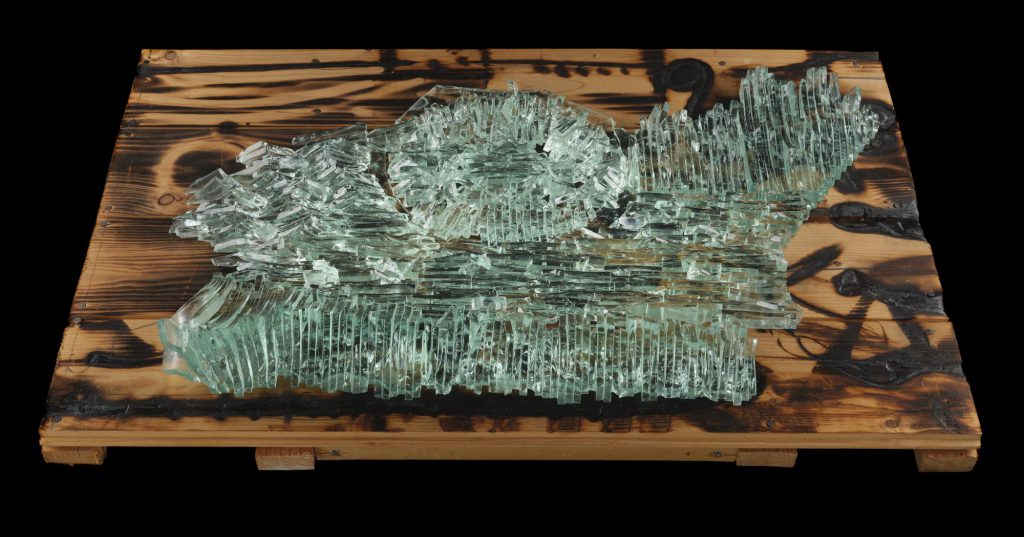

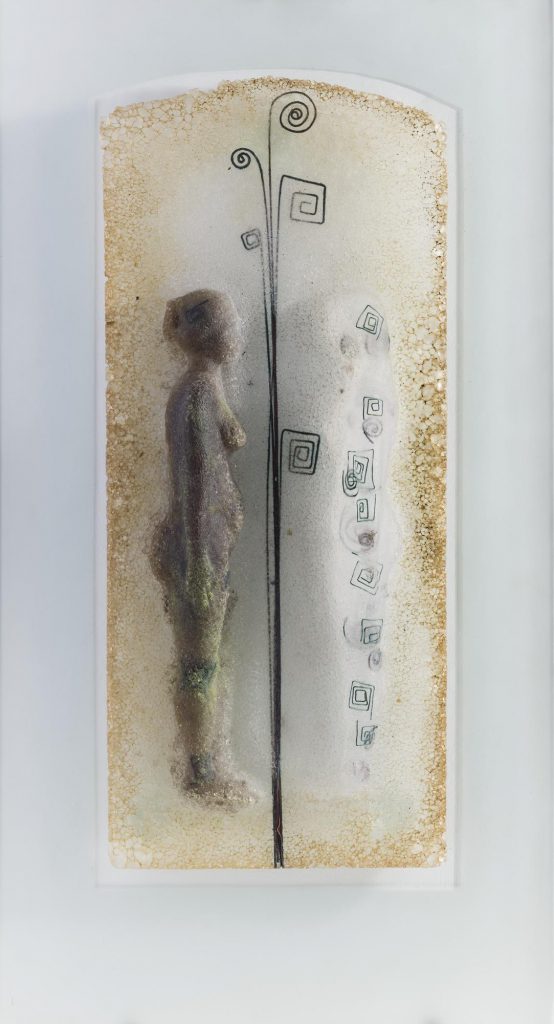
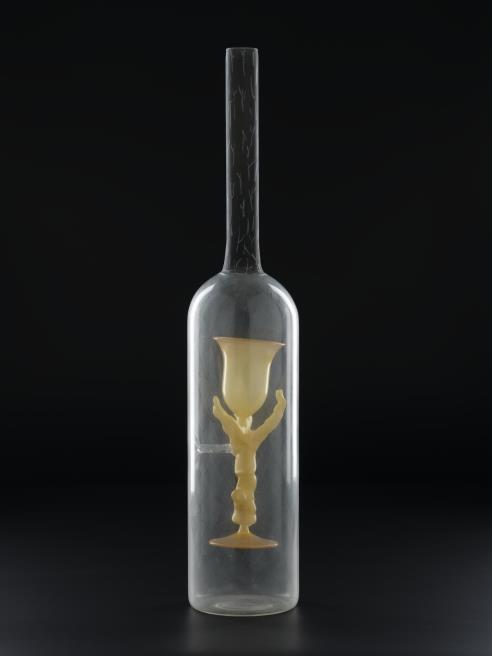
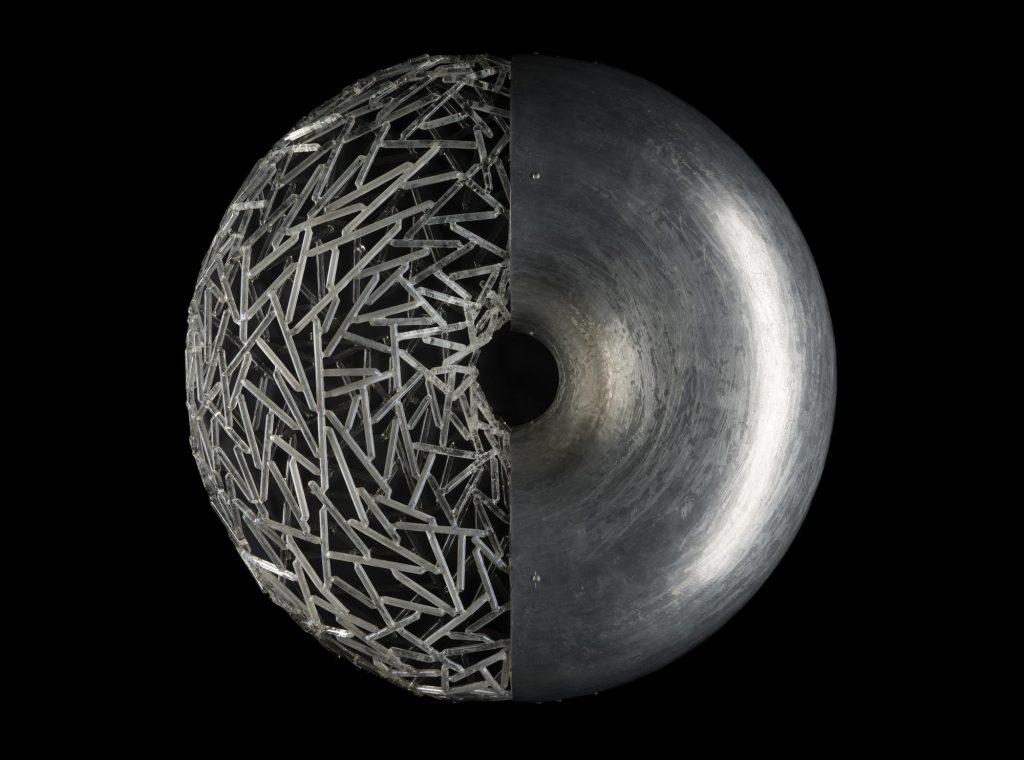
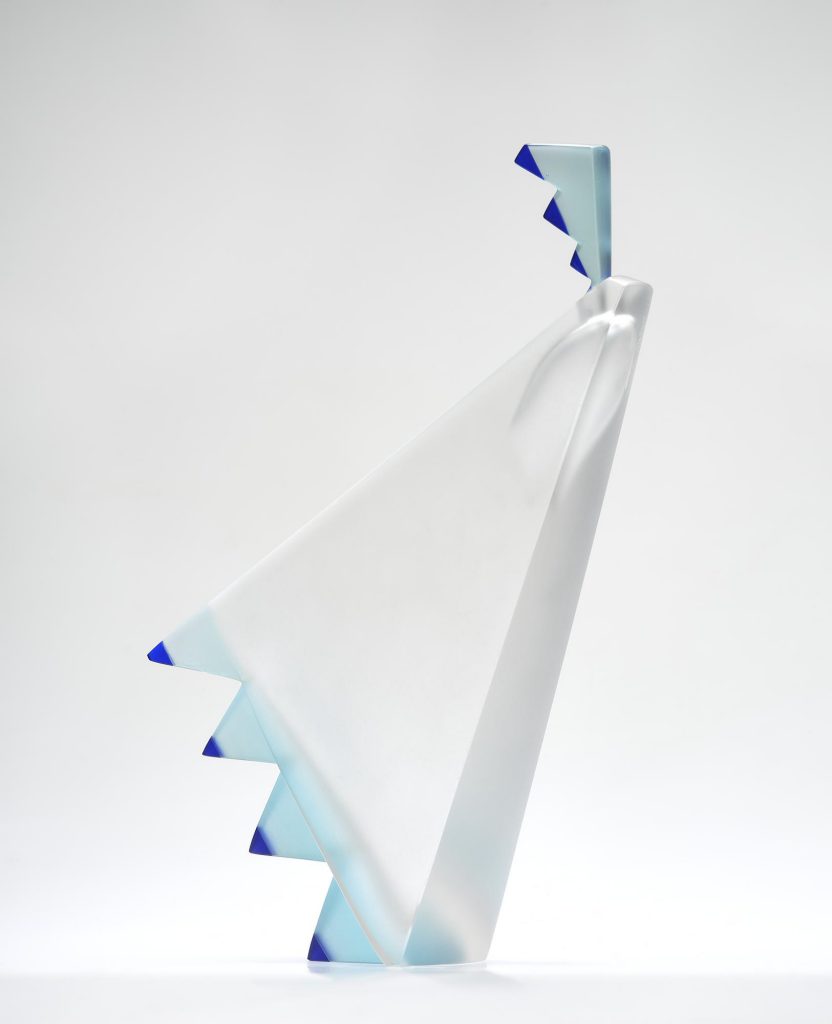
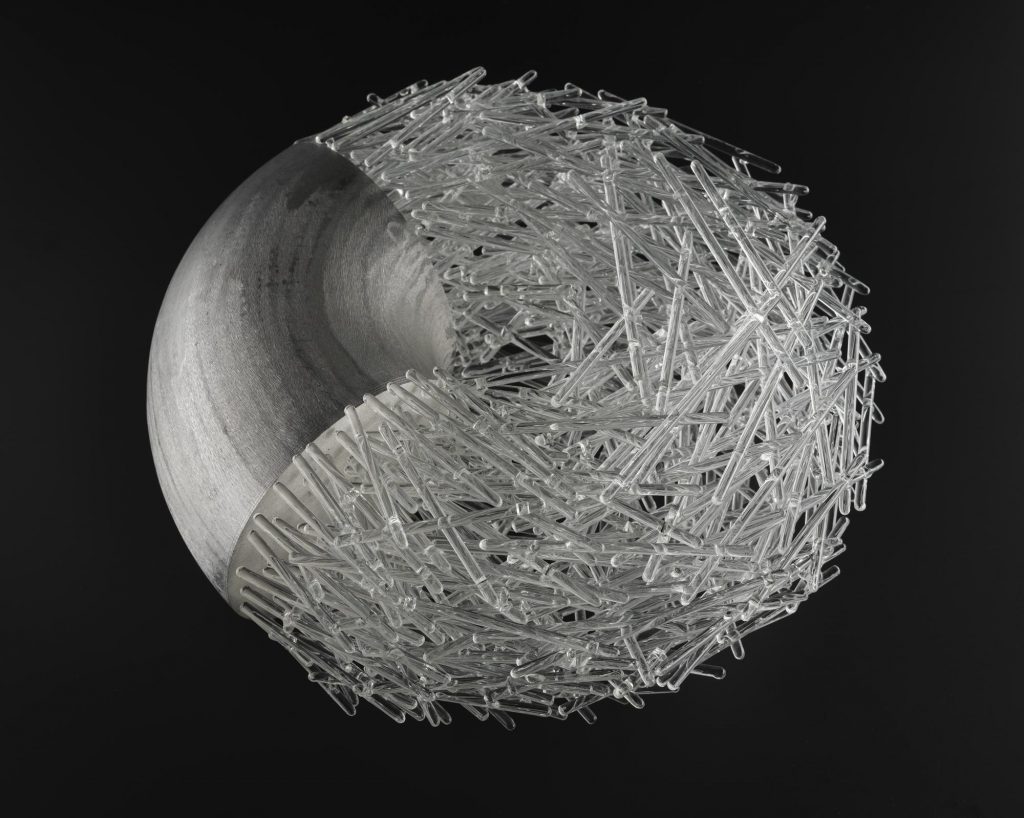

The 14 works from the Dan Klein and Alan J. Poole Private Collection of Modern Glass following conservation treatment. Images © National Museums Scotland
Deborah Hopkins was one of the many artist who very generously gave their time to assist with the teams queries. This not only aided Holly in her conservation of Form (K.2011.60.141); it also gave Stefka and myself insight into how it was originally displayed and mounted, the knowledge of which had been lost and not recorded. And that we would need to work in the future with a specialist mount maker to create a bespoke mount to allow us to display the artwork in the future.
For many of the students this interaction with living artists opened another dimension of experience that they had not previously had the opportunity to discover, or to consider the benefit of this shared knowledge exchange. And in turn for the artists themselves, seeing their works conserved for the future, and understanding the skill it took by the team to do this, moved many of them beyond words. Richard Meitner writing to Margot following the completion of Branch said:
“I am delighted to get your report on the repair you made of my work, and astounded to see how successfully you managed to complete it. My overriding feeling on seeing this is admiration for the care, attention and creativity you harnessed to complete the job. Making that type of ‘ship in a bottle’ works (I’m guessing I perhaps made 10-15 different models in that style at the time) involved a different kind of indirect ‘puppetry’ than yours to repair it, but the action required in both cases resonates as very similar, and carries artistic meaning for me of the same kind. I’m quite simply very flattered to see that something I’ve done is considered important enough to undertake those very considerable efforts you’ve invested”.
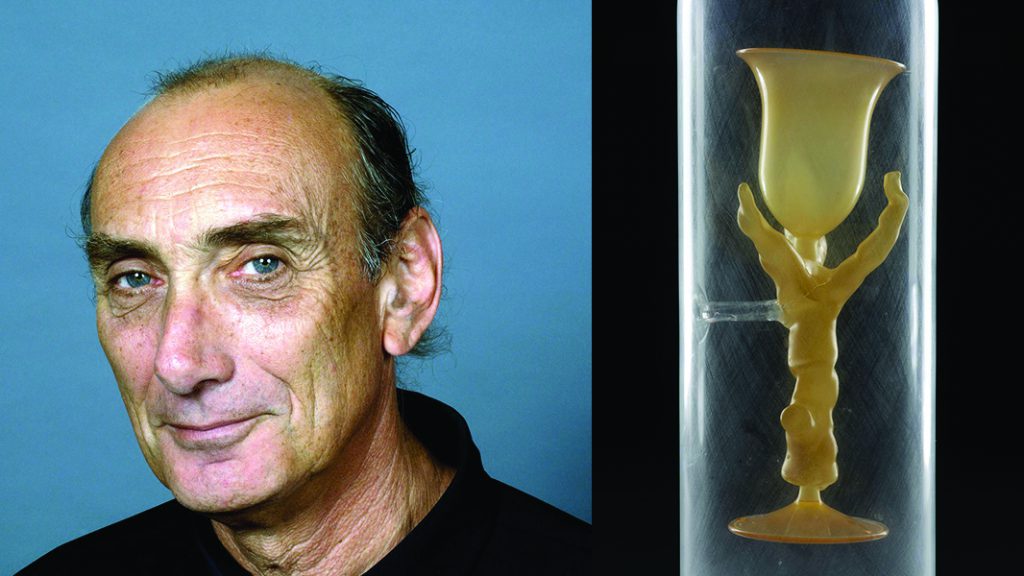
Whereas Lesley Wildman, following reading Lydia’s blog, choose to send the below message of thanks:
“So happy to see this piece again and how amazing the process is. So grateful for all your loving care. As an artist, when one’s work is entrusted into the keep of others, you have to make a conscious choice to let it go. It was a delight to see your team take such time and use such ingenuity to protect and conserve one of my more delicate creations.”
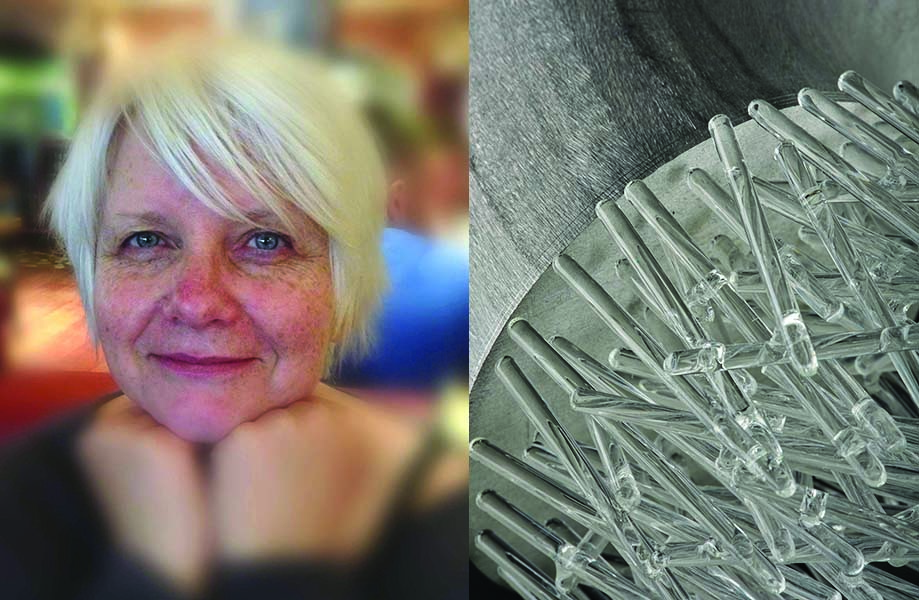
The project went on to involve a diverse team of six conservators, not only from here at National Museums Scotland’s Artefact Conservation department, which included (below from left to right) Stefka Bargazova: Artefact Conservator and project lead, Lydia Messerschmidt: NMS Artefact Conservator, and Margot Murray: NMS Assistant Conservator; but also students of conservation from UCL London and West Dean College of Arts and Conservation; Amreet Kular: UCL student, Holly Daws: West Dean student, Thea Christophersen: UCL student. The series of blogs from this amazing team of conservators telling the remarkable stories behind their work in conserving these contemporary works of art glass, is a testament to their dedication and skills in problem solving and working with often complex works of art.
It was an honour for me to assist where I could and be part of the shared knowledge exchange, learning more about these works from the artists directly, finding out why they were created and how. And personal memories and connections were also shared: for instance we learnt through our email exchanges that Charlotte Hughes Martin work Venetian Blinds (K.2011.60.78) has a special place in her heart, because when she sold the work to Dan she was particularly poor. The money she received from the sale of this work bought her a plane ticket to America, which allowed her to study for her Masters in Fine Art, for which she is still very grateful to Dan for.
What started out initially as an impossible task to fit within the busy life of our Artefact Conservation department, went onto develop into an exciting collections conservation project, which involved collaboration, conversation and the connection this team made with the artwork and each other. I have been awed by the feats of conservation skills employed by the team within this project, and how the Dan Klein Glass Conservation team found solutions for them all.
I would like to extend my special thanks to Stefka who whole heartily embraced this project and assembled a wonderful team, without whom these works may not have been preserved for future generations to admire. But this is not the end of the work happening within the Museums contemporary glass collection. NMS continues to work in collaboration with West Dean conservation school on conserving a large waterjet cut glass wall sculpture, which I am pleased to say, we will be able to tell you more about in the future.
